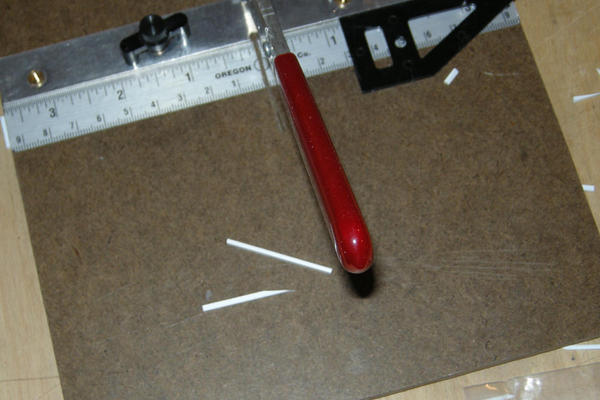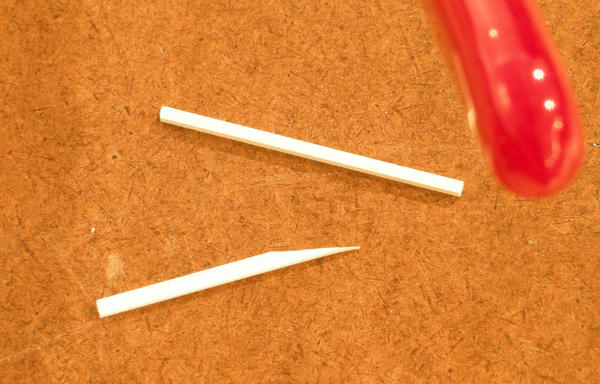Mike
No wear noticed at all. But they turned black pretty quickly and blended into my painted rail.* Four years later I have noticed no change in performance.
I also would not have expected these to wear out. The pressure on the styrene is very low, due to the rounded edges of the wheel flanges (Imagine trying to score styrene with a wheel!), and there is no place for the styrene to expand laterally, because it is constrained by the running rail and guard rails
The other advantange of this approach is these strips are very easy to remove if you mess up. I.E. choose the wrong thickness. They are just wedged in, and running the trains seats them in place.
John
*Incidentally, I paint the sides of all my rail with a polly scale mix of weathered black and rail brown. I use a chisel foam brush and it goes very quickly.
I re state my original statement, these would not be needed if the frog was built properly to begin with










